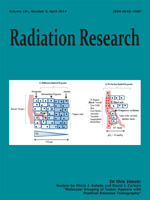The problem of tumor hypoxia has been recognized and studied by the oncology community for over 60 years. From radiation and chemotherapy resistance to the increased risk of metastasis, low oxygen concentrations in tumors have caused patients with many types of tumors to respond poorly to conventional cancer therapies. It is clear that patients with high levels of tumor hypoxia have a poorer overall treatment response and that the magnitude of hypoxia is an important prognostic factor. As a result, the development of methods to measure tumor hypoxia using invasive and noninvasive techniques has become desirable to the clinical oncology community. A variety of imaging modalities have been established to visualize hypoxia in vivo. Positron emission tomography (PET) imaging, in particular, has played a key role for imaging tumor hypoxia because of the development of hypoxia-specific radiolabelled agents. Consequently, this technique is increasingly used in the clinic for a wide variety of cancer types. Following a broad overview of the complexity of tumor hypoxia and measurement techniques to date, this article will focus specifically on the accuracy and reproducibility of PET imaging to quantify tumor hypoxia. Despite numerous advances in the field of PET imaging for hypoxia, we continue to search for the ideal hypoxia tracer to both qualitatively and quantitatively define the tumor hypoxic volume in a clinical setting to optimize treatments and predict response in cancer patients.
How to translate text using browser tools
27 March 2014
Molecular Imaging of Tumor Hypoxia with Positron Emission Tomography
Olivia J. Kelada,
David J. Carlson
ACCESS THE FULL ARTICLE

Radiation Research
Vol. 181 • No. 4
April 2014
Vol. 181 • No. 4
April 2014




